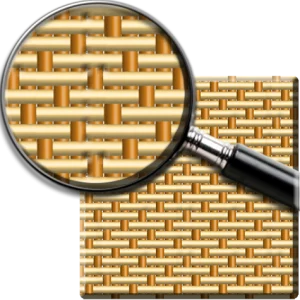Industry News
Composite Fabric Weave Styles
Most weave styles consist of strands of material running the length of the fabric, known as the Warp, and running the width of the fabric, known as the Fill or Weft. How these strands cross over and under each other defines the weave style.
There are several weave styles used in composite fabrics. The following will explain the most common weave styles and the advantages or disadvantages of each style.
 | Plain Weave This is a 1×1 weave with each warp strand floating over 1 fill strand then under 1 fill strand. The frequent over and under weaving reduces the overall strength of the fabric. This weave produces a fabric that will fray the least and works well for flat surfaces but is the least pliable and does not drape well over shaped molds. |
 | 2×2 Twill This weave style gives the fabric a 3 dimensional appearance and is the most common weave style used across multiple industries. It consists of 1 warp strand floating over two fill strands then under two fill strands. This weave drapes relatively well and can be used on shaped molds or parts. A twill weave will come apart more easily at the edges, so the fabric must be handled with care. |
 | 4×4 Twill Similar to 2×2 Twill except each warp strand floats over 4 fill strands then under 4 fill strands. This is a looser weave than a 2×2 Twill and will drape better over shaped molds and parts. Being a twill weave the edges will fray more easily. |
 | 2×2 Dual Twill This weave style is used in Hybrid fabrics and has the same 2 warp strands over 2 fill strands then under 2 fill strands as a 2×2 Twill but both the warp and fill consist of alternating fabric types. For example a strand of Carbon Fiber then a strand of Kevlar. |
 | 4 Harness Satin Weave With this weave each fill strand floats over 3 warp strands then under 1 warp strand. This weave is more pliable than a twill weave and conforms well to complex curves. |
 | 5 Harness Satin Weave This a less common weave with each fill strand floating over 4 warp strands then under 1 warp strand. This weave is also very pliable and works well when used in complex curved molds. |
 | 8 Harness Satin Weave With this weave each fill strand floats over 7 warp strands then under 1 warp strand. This weave conforms very well to complex curves. |
 | Unidirectional Weave This weave has strands running in the warp direction only. The strands are sewn or glued together to make the fabric. This weave provides very high strength in the Warp direction but flexes more in Fill direction. |
 | Biaxial Weave This weave consists of two unidirectional fabrics sewn together at +/-45°. This gives the fabric strength in each direction. |
 | Chopped Strand This weave consists of chopped fibers randomly positioned to form a thin matting. |
PREVIOUS:Carbon Fiber Fundamentals
NEXT:Development of Enterprises
RELATED NEWS
- Composite Laminate Cutting 2024-08-23
- Carbon Fiber Fundamentals 2024-09-12
CATEGORIES
LATEST NEWS
CONTACT US
Contact: Kai Liu
Phone: +86-15376801419
E-mail: liukai@hxcomposite.com
Whatsapp:+86-153 7680 1419
Add: D-407 Yintaicheng, Zhangdian, Zibo, Shandong 255000
